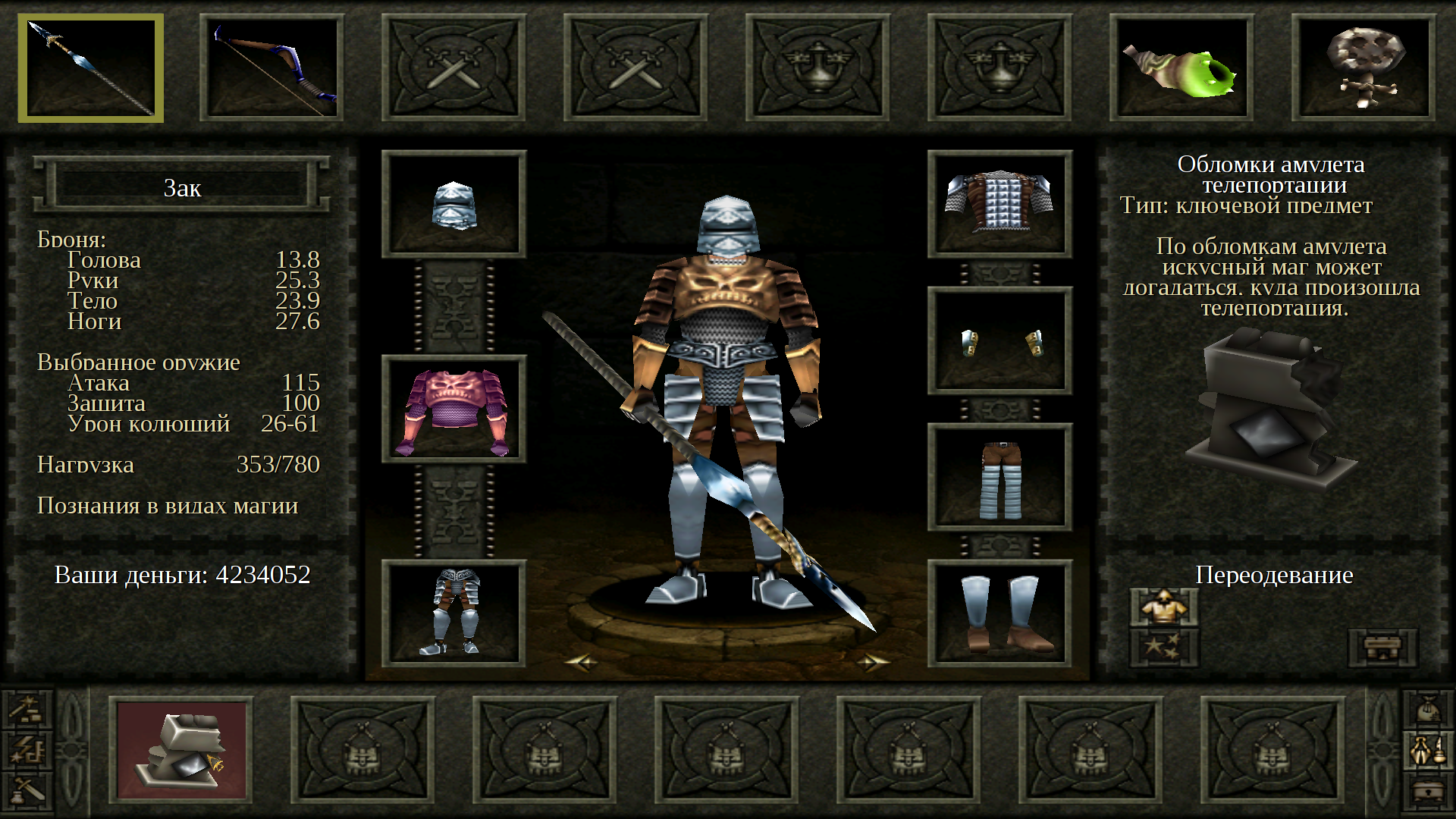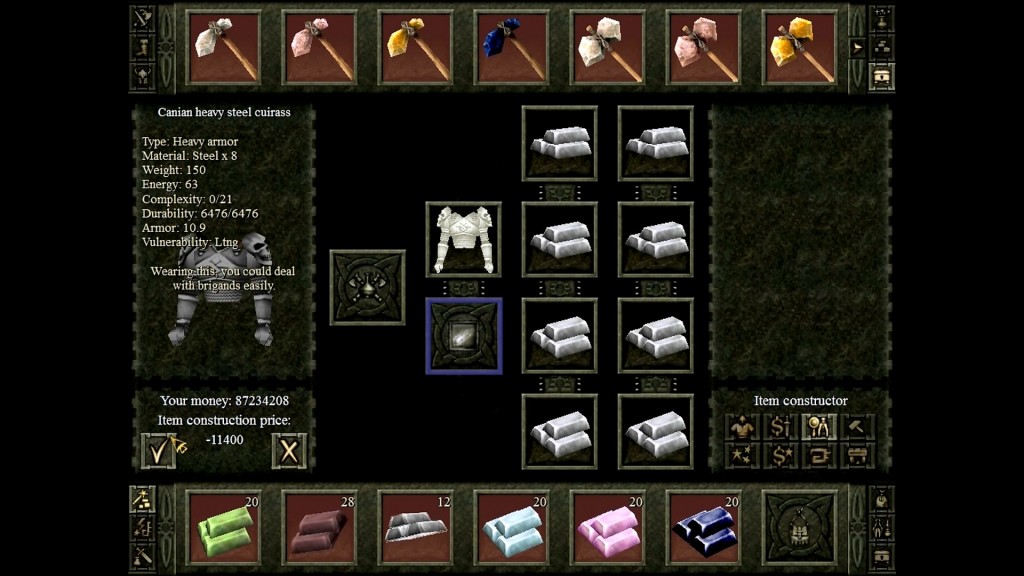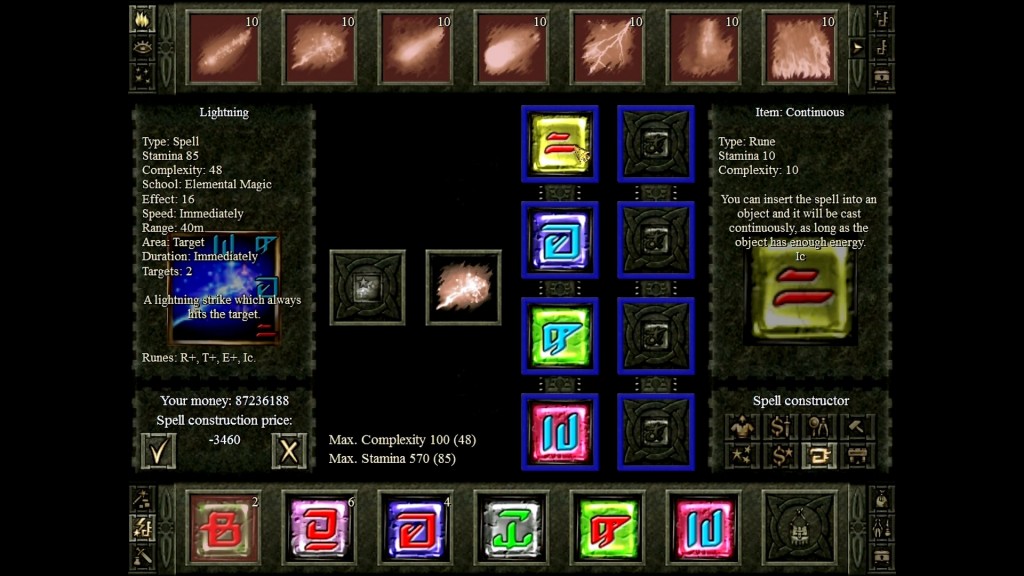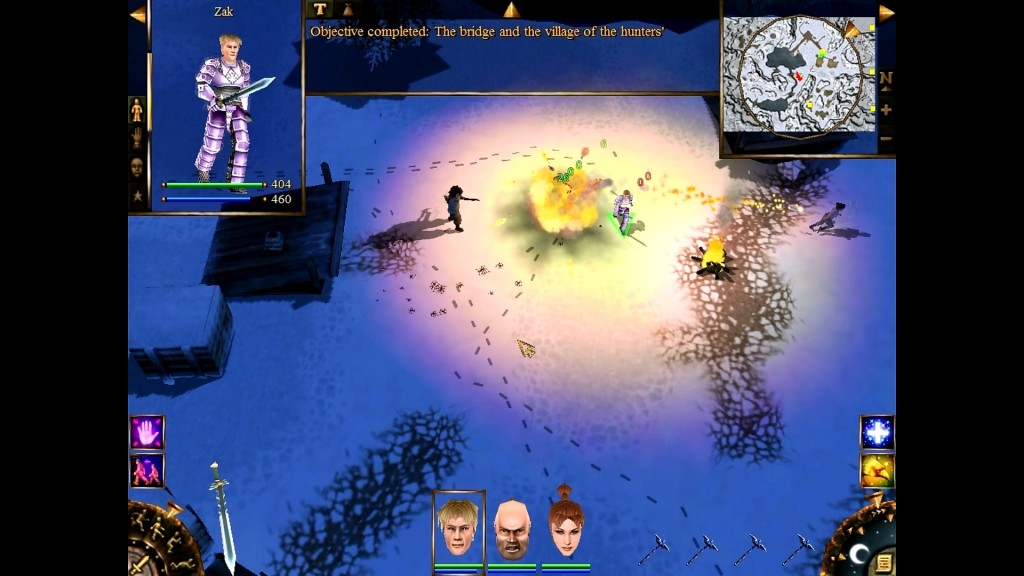System crafting in the Cursed Lands

The article is a text transcript of the video, supported through the author’s Patreon: www.patreon.com/farlands
Recently, much attention is paid to the system gameplay . Despite the fact that system games have existed for a long time, today there is a lot of deliberate discussion about games that create an emergent gameplay , allowing players to experiment with the rules and mechanics. In many such games, there is a crafting system, and although it seems that crafting would also naturally develop in a systematic way, for some reason this did not happen.
In general, crafting is a direct exchange of a specific set of resources to a specific object. The concrete implementation of this exchange may be different: in some games, crafting first needs a recipe, in others a player can experiment and open recipes on his own. There are games in which recipes require not specific resources, but resources of a certain type, or some kind of skill for exchanging. In some games there are mechanics with grooves in which you can insert objects, even more changing the properties of objects. In some, the player is allowed to create multiple objects, but at his core most of the crafting systems consist in wasting certain resources to obtain a specific object.
')
But in reality there IS a game in which system crafting was implemented 18 years ago. Evil Islands is a Russian tactical RPG released in 2000. I played it when I was nine years old, and it was thanks to Cursed Lands that I wanted to become a game designer. I can talk about this game all day. In it you can find an interesting mix of a mechanic, a fascinating storyline, great characters, amazing music and one of the best voice acting I've ever seen in my whole life. In any case, if you play the original Russian version, and not the English translation. Yes, and this is the voice of the protagonist in translation. My deepest regrets.
Many aspects of the game for that time were very innovative. Today, they look pretty standard, but the Crafting of the Cursed Lands crafting system is still unparalleled. At least, as far as I know - if you know a game that has studied crafting in ways similar to Evil Islands, let me know, I will be very happy to see this.

Let's first deal with the interface of objects. This is the inventory of the main character. We can take his armor and disassemble it into pieces. As you can see, in fact it is a combination of two types of components: a drawing and materials.

Drawings are the basis of each item, they define the basic characteristics and the category of materials used. Each material has its own characteristics, multiplying the basic characteristics of objects.
For example, there are six metal materials: bronze, iron, steel, mithril, adamanty, and meteorite. Bronze is the cheapest, but also the heaviest. Mithril is better protected and lighter. The meteorite provides the best protection, but is not found in stores and has to be obtained from the most powerful enemies in the game.

So, for this armor, 8 pieces of material are required, and I can replace all the iron with the obtained steel, press a button - and voila! I now have a piece of steel armor. Since the materials are multipliers, the number of them required by the drawing is important - it means that this armor will provide more protection, but it will be the heaviest.
Now let's imagine that an iron sword fell from the enemy. I will not be sad that it is made of iron, and I do not need to worry about finding a recipe for creating the steel version of this sword. If I have enough steel or enough money to buy it, I can just take this iron sword apart and create a steel sword out of it. Great, right? It also means that you never really lose the collected resources, except for money, of course - you can reapply them there, they will be needed.
It is worth noting that in the "Cursed Lands" it is impossible to combine the materials in the subject. That is, I cannot craft anything from 4 pieces of iron and 4 pieces of steel. This can be considered a disadvantage, but it can be considered a good side, which allows smoothing the learning curve. In fact, everything can be quite confusing.
For example, each material has a weakness. The metal is weak against lightning, so if you are in an area where many enemies use lightning spells, then you may want to craft fur armor made of blue troll fur. A total of 33 materials in the game, 35 drawing weapons and 124 drawings of armor. It seems that by RPG standards this is NOT VERY much, until you realize that there are actually 686 possible crafting items in the game, which are very easy for a player to master thanks to the modular nature of the system.

But so far we have been talking only about subjects. But in the game there are also spells. Like objects, spells consist of their own base-drawing and runes. However, the difference lies in the fact that you are not limited to one type of runes, as was the case with materials for objects. The process of creating spells in “Cursed Lands” is more complicated than creating armor. In my opinion, this is fully justified as the next stage of the learning curve of the game crafting system.
As with items, each spell has basic characteristics that can be modified using runes. For example, take this lightning bolt spell. We can use runes that increase the distance of action, damage, or even allow you to attack multiple targets at the same time! But here you need to be careful, so as not to cause damage to your friends, you can insert a rune that targets only enemies. This type of rune is also useful for area-effect spells. However, when you insert the runes, the spell becomes more difficult and requires more stamina (as well as skill points invested in magic), so you can try inserting a rune that reduces mana consumption. In the end, you can customize the spell exactly to your needs, and this is just wonderful. There are only 30 spells in the game: attacking, defensive and changing characteristics, and they can be used in many different ways.
We can already see that simply having designed the entire crafting system as divided into basic and auxiliary components, you can create many gameplay options that are simple enough to understand if you are suitable in terms of modular fragments, and not a whole wide range of possible results.
But there are some really cool things in “Cursed Lands”. The character has stamina, which is used for spells. Items have energy that depends on the base item and the material used. Why am I talking about this? Because objects can also create spells - they can be combined.

Want to make a piece of armor that will heal you with every blow you strike? It can be arranged. What about the helmet, which increases the range of the review? There is. Is it worth combining a weakening spell with a sword to help it fight enemies? Why not, this is convenient. Automatic spell machine gun, inflicting damage to all enemies when you run past? This is also possible. There is also a special type of object - a rod, which can be used for activated or automated abilities, which in itself does not require mana costs. A player can come up with many interesting combinations and strategies.

These are the wonders of system crafting. Games with system gameplay give the player a set of tools that can interact with different rules and mechanics in an emergent manner. Similarly, Cursed Lands gives you a wide range of crafting opportunities, giving you the basic essences and components you can experiment with.
To be honest to the end. then in the “Damned Lands” not everything is implemented perfectly. Some materials have strange characteristics, some items are useless, because they are effective against a very small number of enemies. In addition, it would be possible to add other aspects to such a system, for example, crafting items from different materials of the same category in order to provide even greater variability. Nevertheless, the game has created a powerful foundation for such experiments. Judging by the fact that the modder community is still active, simply making modifications to existing components can greatly change the crafting research space. In this type of system, adding even one component greatly expands the player’s choice.
Yes, there are many games in which the emphasis is on multi-layer crafting systems. However, thanks to this systemic modular approach, “Cursed Lands” cope with crafting in a very elegant, easy-to-learn and understandable way, while at the same time providing depth and opportunities. I hope that someday I will be able to create a game with such a crafting system. If you are already creating a game with crafting, then I strongly recommend implementing it in a systematic way, as did the Cursed Lands. There is a huge potential not yet explored in this area. Especially if you combine it with the principles of system gameplay.
Thank you for reading the article. Special thanks to my sponsors at Patreon: Paolo di Stefano, Comissar Doggo and my new sponsor: Iggy Zhuk. If you want to join them, then support my campaign at www.patreon.com/farlands .
Comments can be left under the original article. And if you like my video, click on “like” and subscribe to my channel . Thank!
Source: https://habr.com/ru/post/350336/
All Articles